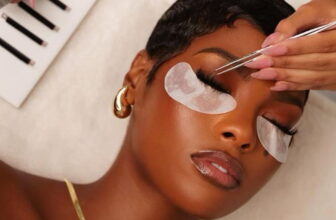Why I would Do “Skin Cycling” Over and Over Again
There’s an anonymous quote I know; “Your makeup game will never be a 10 if your skincare game is only a two,” and that’s precisely where the concept of ‘skin cycling’ comes in. This beauty trend, popularized mainly by TikTok, is more than just a passing fad.
Skin cycling is a four-day skincare routine that involves a rotation of exfoliants, retinol-based products, and moisturizers. Its purpose is to give your skin a much-needed break, potentially leading to improved skin health and reduced irritation from potent ingredients. But, what exactly does this skincare practice entail, and how could it potentially enhance your own routine?
Understanding Skin Cycling
If you’re active in the skincare community on social media, you’ve likely encountered the term “skin cycling.” It’s possible you’ve spotted friends using the #skincycling hashtag or heard influencers incorporating it into their daily routines.
This regimen was conceived by European dermatologist Whitney Bowe during the lockdown and is founded on the principle that alternating skincare products yields enhanced results, akin to the benefits of varying your physical training routines. On TikTok alone, the #skincycling hashtag has amassed a staggering 122.3 million views, underscoring its popularity.
@drwhitneybowe Skin cycling for beginners: how to get started. And how to layer with Bowe Glowe #skincycling #thatboweglow #dermatologist #skintok
♬ original sound – Dr. Whitney Bowe
The Mechanics of Skin Cycling
Skin cycling involves a structured approach to skincare. Here’s the breakdown: One night dedicated to exfoliation, utilizing ingredients like AHAs (glycolic or lactic acid) or BHAs (salicylic acid).
Another night is reserved for retinoids, such as over-the-counter retinol, or prescription-strength options like tretinoin or adapalene. The last two nights focus on “recovery” or rest, incorporating hydrating and calming skincare products. The basic steps like cleansing and moisturizing remain consistent throughout this cycle.
So, why consider adopting this routine?
The Benefits of Skin Cycling
Skin cycling, according to experts, can effectively maintain the health of your skin barrier by preventing excessive use of active ingredients that could potentially strip or irritate your skin. Based on my personal experience, its structured approach provides guidance for those unsure about which skincare products to use and when.
Skin cycling also serves as a safeguard against over-exfoliation and overuse of products with active ingredients, which can lead to skin irritation, inflammation, and a compromised skin barrier. Additionally, if you’re not used to chemical exfoliants or retinoids, skin cycling offers a gentle way to introduce these ingredients without risking skin dryness or irritation.
Potential Side Effects of Skin Cycling
If you’re new to AHAs, BHAs, or retinoids, you might experience some dryness and irritation when incorporating them into your routine through skin cycling. Remember that these active ingredients make your skin more sensitive to sunlight, so diligent SPF application throughout the day is crucial.
Also, don’t underestimate the importance of patch-testing new skincare products to avoid potential allergic reactions. Always apply a small amount to a small area before using it more broadly.
For those who appreciate the gradual integration of retinoids, AHAs, or BHAs into their routine through skin cycling, you can gradually increase the frequency after a month. In the mornings, stick to this routine: cleanse, apply a vitamin C serum, moisturize, and protect your skin with SPF 30 or higher.
A Typical Skin Cycling Schedule
Here’s a simplified version of a skin cycling routine:
-
Night 1: Exfoliation Routine
On the first night, start by removing makeup, cleansing, and then exfoliating using salicylic acid. Finish by moisturizing with a blend of hyaluronic acid and ceramides.
-
Night 2: Use Retinoids
For the second night, kickstart your anti-aging regimen by removing makeup, cleansing, and applying retinol (such as tretinoin). Conclude with moisturizing using hyaluronic acid and ceramides.
-
Nights 3 and 4: Skin Recovery
On the third and fourth nights, give your skin a much-needed break. Focus on hydration and renewal by applying a serum containing niacinamide, peptides, or growth factors. Follow up with moisturization using hyaluronic acid and ceramides.
How long should you do skin cycling?
Dr. Vera Morandini, a dermatologist, recommends following this routine for six weeks, which is the optimal duration for your skin to regenerate and adjust to the effects of retinol. Once this adaptation phase is complete, you can transition to a more intensive retinol regimen, even considering daily use based on your skin’s tolerance level.
If your skin has already successfully adapted to retinol, you can begin skin cycling at any point in the year, as long as you take the necessary precautions. However, if your skin has not yet acclimated to retinol, it’s advisable to initiate your skincare routine during a season when you have limited sun exposure.
In a nutshell, skin cycling offers a straightforward way to give your skin a break in between active ingredient treatments, potentially reducing irritation. It consists of one night of exfoliation, followed by one night of retinoids or retinol, and two consecutive nights of rest.
This approach may be especially beneficial for those sensitive to the effects of active ingredients, but consulting a dermatologist is always a wise move to tailor your skincare routine to your unique needs.
Photo: Pexels/Sora Shimazaki






